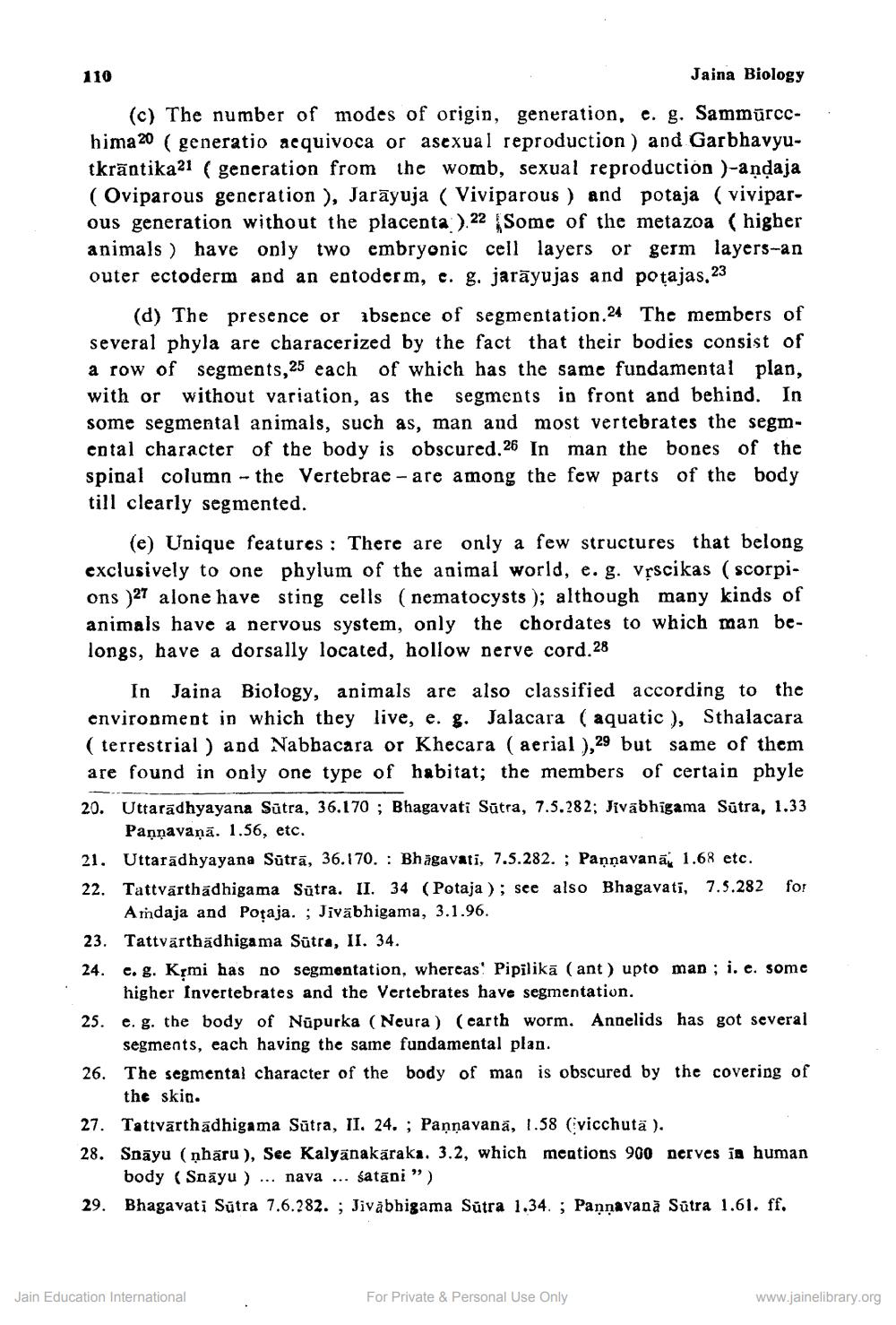________________
110
Jaina Biology
(c) The number of modes of origin, generation, c. g. Sammürcchima 20 ( generatio aequivoca or asexual reproduction) and Garbhavyutkrāntika21 ( generation from the womb, sexual reproduction )-aņdaja (Oviparous generation ), Jarāyuja (Viviparous ) and potaja (viviparous generation without the placenta ).22 Some of the metazoa (higher animals) have only two embryonic cell layers or germ layers-an outer ectoderm and an entoderm, c. g. jarāyujas and potajas, 23
(d) The presence or absence of segmentation.24 The members of several phyla are characerized by the fact that their bodies consist of a row of segments,25 each of which has the same fundamental plan, with or without variation, as the segments in front and behind. In some segmental animals, such as, man and most vertebrates the segmental character of the body is obscured. 26 In man the bones of the spinal column - the Vertebrae - are among the few parts of the body till clearly segmented.
(e) Unique features : There are only a few structures that belong exclusively to one phylum of the animal world, e. g. Vrscikas ( scorpions )27 alone have sting cells (nematocysts ); although many kinds of animals have a nervous system, only the chordates to which man belongs, have a dorsally located, hollow nerve cord. 28
In Jaina Biology, animals are also classified according to the environment in which they live, e. g. Jalacara ( aquatic ), Sthalacara ( terrestrial) and Nabbacara or Khecara (aerial ),29 but same of them are found in only one type of habitat; the members of certain phyle 20. Uttaradhyayana Sūtra, 36.170 ; Bhagavati Sūtra, 7.5.282; Jivabhigama Sūtra, 1.33
Pannavaņā. 1.56, etc. 21. Uttarādhyayana Sūtrā, 36.170. : Bhagavati, 7.5.282. ; Paạnavanā 1.68 etc. 22. Tattvärthadhigama Sutra. II. 34 (Potaja); see also Bhagavati, 7.5.282 for
Andaja and Potaja. ; Jivabhigama, 3.1.96. 23. Tattvārthādhigama Sūtra, II. 34. 24. e. g. Kami has no segmentation, whereas Pipilikā (ant) upto man ; i. e. some
higher Invertebrates and the Vertebrates have segmentation. 25. e. g. the body of Nūpurka (Neura) (carth worm. Annelids has got several
segments, each having the same fundamental plan. 26. The segmental character of the body of man is obscured by the covering of
the skin. 27. Tattvarthadhigama Sūtra, II. 24. ; Paņnavanā, 1.58 (vicchuta ). 28. Snāyu (ņharu ), See Kalyanakāraka. 3.2, which meations 900 nerves in human
body (Snāyu ) ... nava ... satāni”) 29. Bhagavati Sūtra 7.6.282. ; Jivabhigama Sūtra 1.34. ; Pannavana Sūtra 1.61. ff.
Jain Education International
For Private & Personal Use Only
www.jainelibrary.org




